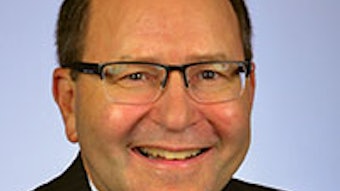Alphabet soup: Acronyms you need to know
Ever read an article, had a conversation, or watched a news program that included myriad acronyms that cause a “what does that mean” moment? Cross a couple of those questions off your list by reviewing this compilation of acronyms you need to know to be an effective advocate for the specialty!
Ever read an article, had a conversation, or watched a news program that included myriad acronyms that cause a “what does that mean” moment? Cross a couple of those questions off your list by reviewing this compilation of acronyms you need to know to be an effective advocate for the specialty! Questions about these terms or how to get involved? Contact the AAO-HNS Advocacy Team at GovernmentAffairs@entnet.org.

3P – Physician Payment Policy Workgroup. 3P is an advisory body to Academy leadership and staff on issues related to socioeconomic advocacy, regulatory activity, coding and reimbursement, and practice management. 3P oversees the review and content for the Clinical Indicators and the Position Statements, and produces resources to members such as template appeal letters and CPT for ENT coding guidance articles.
APM – Alternative Payment Model. APMs are a type of payment methodology that incorporates quality and total cost of care into reimbursement. Eligible clinicians that successfully participate in a CMS-defined Advanced APM may be exempted from MIPS reporting (see below) and receive an incentive payment.
CBO – Congressional Budget Office. CBO produces independent analyses of budgetary and economic issues to support the congressional budget process. CBO “scores” proposed bills to help lawmakers understand the cost or savings associated with a legislative package.
CHHC – Congressional Hearing Health Caucus. CHHC is a bipartisan caucus of members from the U.S. House of Representatives and Senate committed to supporting the needs of people with hearing loss and other auditory disorders. The AAO-HNS is a member of the Friends of the CHHC.
CMS – Centers for Medicare & Medicaid Services. CMS is a federal agency within the U.S. Department of Health and Human Services. It is responsible for administrating the Medicare program and working with states on the administration of their Medicaid programs.
HIT – Health Information Technology. Software and computer systems make medical records electronic, reducing paperwork errors and redundant forms. Federal and state governments are implementing numerous proposals to encourage the adoption of HIT while promoting quality initiatives and protecting patient privacy.
I-GO – In-district Grassroots Outreach. The Academy’s I-GO program connects AAO-HNS members with their elected federal officials at home in their legislative districts. These in-district opportunities provide a more personal and relaxed setting for legislators and AAO-HNS members to interact and discuss the Academy’s legislative priorities and their impact on patient care.
MACRA – Medicare Access and CHIP Reauthorization Act. MACRA repealed the Sustainable Growth Rate (SGR) formula that Medicare previously used to determine physician reimbursement and established the QPP and MIPS (see below).
MIPS – Merit-based Incentive Payment System. MACRA created the MIPS to replace the previous CMS Quality Initiative Programs and the SGR formula. MIPS incorporates aspects of several legacy CMS quality programs to develop a component score to determine physician payment. Eligible clinicians report on four categories that add up to a composite performance score (CPS).
NIDCD – The National Institute on Deafness and Other Communication Disorders. NIDCD is one of 27 Centers and Institutes that make up the National Institutes of Health (NIH) and conducts biomedical and behavioral research in the fields of hearing, taste, smell, voice, balance, language, and speech, thereby supporting disease prevention and health promotion.
PAC – Political Action Committee. PACs allow individuals with shared interests the opportunity to pool their voluntary donations to make contributions to federal candidates on behalf of the entire group. PACs represent a legal way to participate in the election process. ENT PAC (www.entpac.org) is the political action committee of the AAO-HNS.
TIA – Truth in Advertising. The AAO-HNS and others in the physician community support state and federal efforts to implement TIA legislation requiring ALL healthcare providers to inform patients of their credentials and/or level of training in patient communications and marketing materials. TIA is an important component of providing patients with the best possible care.
QPP – Quality Payment Program. QPP provides Medicare payment incentives for physicians and other eligible clinicians, rewarding value and outcomes in one of two ways (based on practice size, specialty, location, or patient population); through either MIPS or Advanced APMs.












